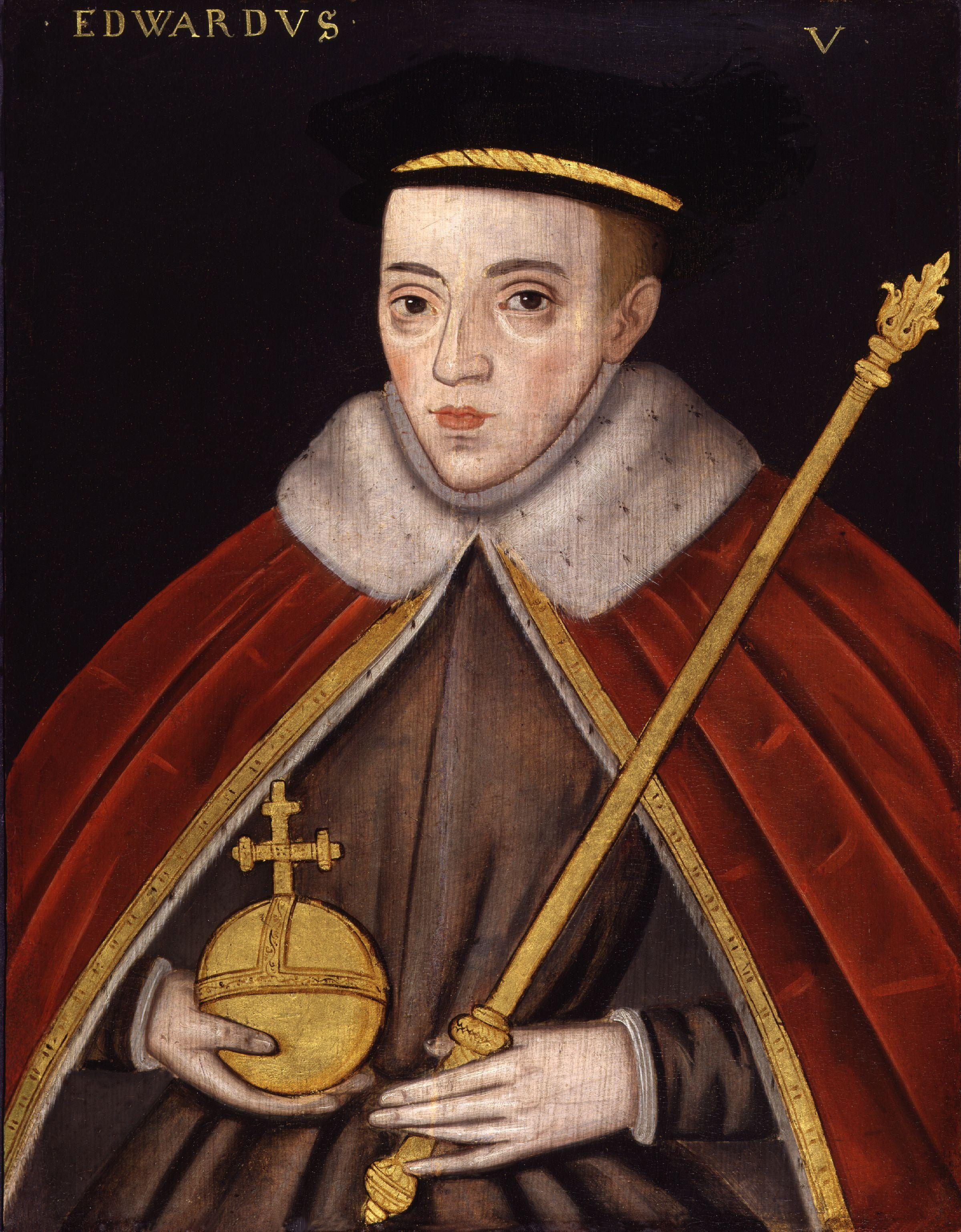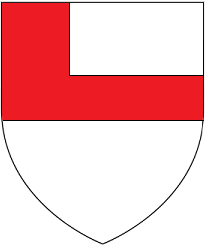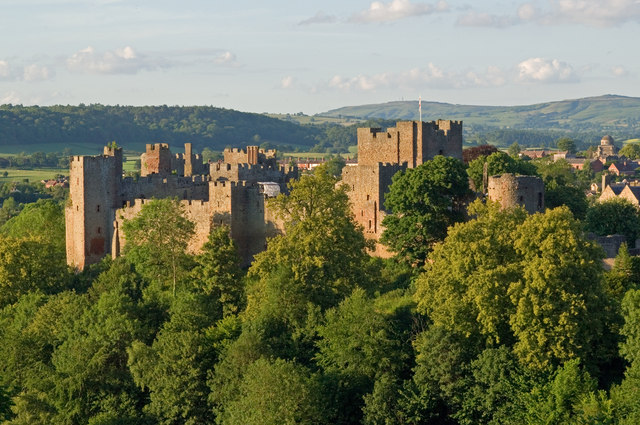|
Edward V Of England
Edward V (2 November 1470 – mid-1483)R. F. Walker, "Princes in the Tower", in S. H. Steinberg et al, ''A New Dictionary of British History'', St. Martin's Press, New York, 1963, p. 286. was ''de jure'' King of England and Lord of Ireland from 9 April to 25 June 1483. He succeeded his father, Edward IV, upon the latter's death. Edward V was never crowned, and his brief reign was dominated by the influence of his uncle and Lord Protector, the Duke of Gloucester, who deposed him to reign as King Richard III; this was confirmed by the Act entitled ''Titulus Regius'', which denounced any further claims through his father's heirs. Edward V and his younger brother Richard of Shrewsbury, Duke of York, were the Princes in the Tower who disappeared after being sent to heavily guarded royal lodgings in the Tower of London. Responsibility for their deaths is widely attributed to Richard III, but the lack of solid evidence and conflicting contemporary accounts allow for other possibiliti ... [...More Info...] [...Related Items...] OR: [Wikipedia] [Google] [Baidu] |
Dictes And Sayings Of The Philosophers
''Dicts and Sayings of the Philosophers'' ("The Sayings of the Philosophers") is an incunabulum, or early printed book. The Middle English work is a translation, by Anthony Woodville, of an original book written in Arabic by the medieval Arab scholar al-Mubashshir ibn Fatik', titled ''Mukhtār al-ḥikam wa-maḥāsin al-kalim'' (مختار الحكم ومحاسن الكلم) which had been translated into several languages. Woodville based his version on an earlier French translation. His translation would come to be printed by William Caxton in 1477 as either the first, or one of the earliest, books printed in the English language.''DNB'', p. 383 Description The manuscript of the French translation ''Dits Moraulx des Philosophes'' describes itself as a compendium of the words of wisdom, or collected quotations, from biblical, classical, and legendary philosophers, written in prose form. Generally the chapters are introduced by some biographical notes on the philosopher, fol ... [...More Info...] [...Related Items...] OR: [Wikipedia] [Google] [Baidu] |
Princes In The Tower
The Princes in the Tower refers to the apparent murder in England in the 1480s of the deposed King Edward V of England and Richard of Shrewsbury, Duke of York. These two brothers were the only sons of King Edward IV and Elizabeth Woodville surviving at the time of their father's death in 1483. When they were 12 and 9 years old, respectively, they were lodged in the Tower of London by their paternal uncle and all-powerful regent the Duke of Gloucester. This was supposedly in preparation for Edward V's forthcoming coronation. However, before the young king could be crowned, he and his brother were declared illegitimate. Gloucester ascended the throne as Richard III.Tim Thornton"More on a Murder: The Deaths of the ‘Princes in the Tower’, and Historiographical Implications for the Regimes of Henry VII and Henry VIII."''History'' 106.369 (2021): 4-25. It is unclear what happened to the boys after the last recorded sighting of them in the tower. It is generally assumed that they ... [...More Info...] [...Related Items...] OR: [Wikipedia] [Google] [Baidu] |
Anthony Woodville, 2nd Earl Rivers
Anthony Woodville, 2nd Earl Rivers (c. 144025 June 1483), was an English nobleman, courtier, bibliophile and writer. He was the brother of Queen Elizabeth Woodville who married King Edward IV. He was one of the leading members of the Woodville family, which came to prominence during the reign of King Edward IV. After Edward's death, he was arrested and then executed by the Duke of Gloucester (the future King Richard III) as part of a power struggle between Richard and the Woodvilles. His English translation of ''The Dictes and Sayings of the Philosophers'' is one of the first books printed in England. This presents a detailed biography. Origins He was the eldest son to survive childhood of Richard Woodville, 1st Earl Rivers, by his wife Jacquetta of Luxembourg. His sister was Elizabeth Woodville, who married King Edward IV of England, Edward IV and became queen. Career Like his father, he was originally a House of Lancaster, Lancastrian, fighting on that side at the Bat ... [...More Info...] [...Related Items...] OR: [Wikipedia] [Google] [Baidu] |
Earldom Of Pembroke
Earl of Pembroke is a title in the Peerage of England that was first created in the 12th century by King Stephen of England. The title, which is associated with Pembroke, Pembrokeshire in West Wales, has been recreated ten times from its original inception. Due to the number of creations of the Earldom, the original seat of Pembroke Castle is no longer attached to the title. , the current holder of the earldom is William Herbert, 18th Earl of Pembroke, which is the 10th creation of the title. For the past 400 years, his family's seat has been Wilton House, Wiltshire. The Earls of Pembroke also hold the title Earl of Montgomery, created for the Philip Herbert, 4th Earl of Pembroke, younger son of Henry Herbert, 2nd Earl of Pembroke before he succeeded as the 4th Earl in 1630. The current Earls of Pembroke also carry the subsidiary titles: Baron Herbert of Cardiff, of Cardiff in the County of Glamorgan (1551), Baron Herbert of Shurland, of Shurland in the Isle of Sheppey in the Co ... [...More Info...] [...Related Items...] OR: [Wikipedia] [Google] [Baidu] |
Council Of Wales And The Marches
The Court of the Council in the Dominion and Principality of Wales, and the Marches of the same, commonly called the Council of Wales and the Marches () or the Council of the Marches, was a regional administrative body based in Ludlow Castle within the Kingdom of England between the 15th and 17th centuries, similar to the Council of the North. Its area of responsibility varied but generally covered all of modern Wales and the Welsh Marches of Shropshire, Herefordshire, Worcestershire, Cheshire and Gloucestershire. The City of Bristol was exempted in 1562, and Cheshire in 1569. History 15th century The Council was initially responsible for governing the lands held under the Principality of Wales, the lands directly administered by the English Crown following the Edwardian conquest of Wales in the 13th century.William Searle Holdsworth, ''A History of English Law'', Little, Brown, and Company, 1912, p. 502 In 1457, King Henry VI created for his son, Prince Edward, a Council to ru ... [...More Info...] [...Related Items...] OR: [Wikipedia] [Google] [Baidu] |
Welsh Marches
The Welsh Marches ( cy, Y Mers) is an imprecisely defined area along the border between England and Wales in the United Kingdom. The precise meaning of the term has varied at different periods. The English term Welsh March (in Medieval Latin ''Marchia Walliae'') was originally used in the Middle Ages to denote the marches between England and the Principality of Wales, in which Marcher lords had specific rights, exercised to some extent independently of the king of England. In modern usage, "the Marches" is often used to describe those English counties which lie along the border with Wales, particularly Shropshire and Herefordshire, and sometimes adjoining areas of Wales. However, at one time the Marches included all of the historic counties of Cheshire, Shropshire, Herefordshire, Worcestershire and Gloucestershire. In this context the word ''march'' means a border region or frontier, and is cognate with the verb "to march," both ultimately derived from Proto-Indo-European ' ... [...More Info...] [...Related Items...] OR: [Wikipedia] [Google] [Baidu] |
Ludlow Castle
Ludlow Castle is a ruined medieval fortification in the town of the same name in the English county of Shropshire, standing on a promontory overlooking the River Teme. The castle was probably founded by Walter de Lacy after the Norman conquest and was one of the first stone castles to be built in England. During the civil war of the 12th century the castle changed hands several times between the de Lacys and rival claimants, and was further fortified with a Great Tower and a large outer bailey. In the mid-13th century, Ludlow was passed on to Geoffrey de Geneville, who rebuilt part of the inner bailey, and the castle played a part in the Second Barons' War. Roger Mortimer acquired the castle in 1301, further extending the internal complex of buildings. Richard, Duke of York, inherited the castle in 1425, and it became an important symbol of Yorkist authority during the Wars of the Roses. When Richard's son, Edward IV, seized the throne in 1461 it passed into the ownership ... [...More Info...] [...Related Items...] OR: [Wikipedia] [Google] [Baidu] |
Prince Of Wales
Prince of Wales ( cy, Tywysog Cymru, ; la, Princeps Cambriae/Walliae) is a title traditionally given to the heir apparent to the English and later British throne. Prior to the conquest by Edward I in the 13th century, it was used by the rulers of independent Wales. The first native Welsh prince was Gruffudd ap Cynan of Gwynedd, in 1137, although his son Owain Gwynedd (Owain ap Gruffudd) is often cited as having established the title. Llywelyn the Great is typically regarded as the strongest leader, holding power over the vast majority of Wales for 45 years. One of the last independent princes was Llywelyn ap Gruffydd (Llywelyn the Last), who was killed at the Battle of Orewin Bridge in 1282. His brother, Dafydd ap Gruffydd, was executed the following year. After these two deaths, Edward I of England invested his son Edward of Caernarfon as the first English prince of Wales in 1301. The title was later claimed by the heir of Gwynedd, Owain Glyndŵr (Owain ap Gruffydd), from ... [...More Info...] [...Related Items...] OR: [Wikipedia] [Google] [Baidu] |
Wars Of The Roses
The Wars of the Roses (1455–1487), known at the time and for more than a century after as the Civil Wars, were a series of civil wars fought over control of the English throne in the mid-to-late fifteenth century. These wars were fought between supporters of two rival cadet branches of the royal House of Plantagenet: Lancaster and York. The wars extinguished the male lines of the two branches, leading to the Tudor family inheriting the Lancastrian claim to the throne. Following the war, the Houses of Lancaster and York were united, creating a new royal dynasty and thereby resolving their rival claims. For over thirty years, there were greater and lesser levels of violent conflict between various rival contenders for control of the English monarchy. The War of the Roses had its roots in the wake of the Hundred Years' War. After fighting a series of armed conflicts with France, the English monarchy's prestige was weakened by emergent socio-economic troubles. This weaken ... [...More Info...] [...Related Items...] OR: [Wikipedia] [Google] [Baidu] |
Yorkist
The House of York was a cadet branch of the English royal House of Plantagenet. Three of its members became kings of England in the late 15th century. The House of York descended in the male line from Edmund of Langley, 1st Duke of York, the fourth surviving son of Edward III. In time, it also represented Edward III's senior line, when an heir of York married the heiress-descendant of Lionel, Duke of Clarence, Edward III's second surviving son. It is based on these descents that they claimed the English crown. Compared with its rival, the House of Lancaster, it had a superior claim to the throne of England according to Cognatic primogeniture#Male-preference primogeniture, cognatic primogeniture, but an inferior claim according to agnatic primogeniture. The reign of this dynasty ended with the death of Richard III of England at the Battle of Bosworth Field in 1485. It became extinct in the male line with the death of Edward Plantagenet, 17th Earl of Warwick, in 1499. Descen ... [...More Info...] [...Related Items...] OR: [Wikipedia] [Google] [Baidu] |
House Of Lancaster
The House of Lancaster was a cadet branch of the royal House of Plantagenet. The first house was created when King Henry III of England created the Earldom of Lancasterfrom which the house was namedfor his second son Edmund Crouchback in 1267. Edmund had already been created Earl of Leicester in 1265 and was granted the lands and privileges of Simon de Montfort, 6th Earl of Leicester, after de Montfort's death and attainder at the end of the Second Barons' War. When Edmund's son Thomas, 2nd Earl of Lancaster, inherited his father-in-law's estates and title of Earl of Lincoln he became at a stroke the most powerful nobleman in England, with lands throughout the kingdom and the ability to raise vast private armies to wield power at national and local levels. This brought himand Henry, his younger brotherinto conflict with their cousin King Edward II, leading to Thomas's execution. Henry inherited Thomas's titles and he and his son, who was also called Henry, gave loyal service ... [...More Info...] [...Related Items...] OR: [Wikipedia] [Google] [Baidu] |
Sanctuary
A sanctuary, in its original meaning, is a sacred place, such as a shrine. By the use of such places as a haven, by extension the term has come to be used for any place of safety. This secondary use can be categorized into human sanctuary, a safe place for people, such as a political sanctuary; and non-human sanctuary, such as an animal or plant sanctuary. Religious sanctuary ''Sanctuary'' is a word derived from the Latin , which is, like most words ending in , a container for keeping something in—in this case holy things or perhaps cherished people (/). The meaning was extended to places of holiness or safety, in particular the whole demarcated area, often many acres, surrounding a Greek or Roman temple; the original terms for these are ''temenos'' in Greek and ''fanum'' in Latin, but both may be translated as "sanctuary". Similar usage may be sometimes found describing sacred areas in other religions. In Christian churches ''sanctuary'' has a specific meaning, covering p ... [...More Info...] [...Related Items...] OR: [Wikipedia] [Google] [Baidu] |







